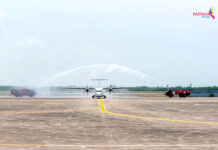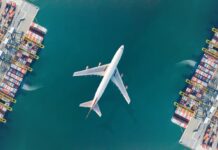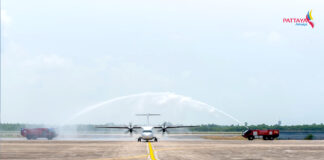

Scandinavia saw patchy growth throughout 2014, which has continued into 2015, with weak currencies meaning strong exports because of demand for the region’s high quality fish, but slow imports and competition from trucking.
Growth for the airports in the region has been variable, with some countries seeing much larger growth than others. Swedish airport operator, Swedavia says so far this year Stockholm Arlanda Airport and Malmo Airport have seen strong growth, but Gothenburg Landvetter Airport has declined. Oslo Airport says cargo grew by 6.4 per cent between January and May this year. According to Airports Council International (ACI) Europe, Helsinki-Vantaa Airport has seen cargo decline by 17.9 per cent to 46,854 tonnes between January and April 2015. Swedavia’s director of key accounts, passenger and cargo, Ylva Arvidsson, says: “We saw an increase at Arlanda and Malmo but a decrease at Gothenburg, mainly due to capacity changes.”
Arvidsson says Arlanda was helped by a thrice weekly service from Korean Air Cargo and Qatar Airways operating 10 flights a week. In April 2014, Malmo was given a boost by AirBridgeCargo Airlines starting twice weekly services. Gothenburg has been hit by Emirates SkyCargo withdrawing its twice weekly service. ACI Europe says Arlanda was up 10.5 per cent between January and April to 22,646 tonnes, Malmo increased by 13.7 per cent to 8,678 tonnes, but Gothenburg fell by 42 per cent to 3,799 tonnes.
In Norway, at Oslo Airport, market analyst, Torolf Holte, says: “Business was very good at Oslo Airport in 2014, with new all-time high cargo volumes of 129,429 tonnes. Business has also been good so far in 2015, with 54,946 tonnes handled in January to May.”
In Denmark at Billund Airport, Cargo Center Billund (pictured left) the vice president for airfreight, Jan Ditlevsen, tells Air Cargo Week (ACW) it handled 62,600 tonnes in 2014, of which, 39,800 tonnes were exports, up 11.5 per cent on 2013 and 2015 has started well. “Cargo Center Billund has seen the total volume handled rise 6.7 per cent against 2014, and again the growth is driven by exports that were up 14.7 per cent, while imports still trailed behind by minus 5.9 per cent.”
Finavia, which operates Finland’s airports, tells ACW it expects improvements from the end of 2015. It says: “Strong growth is expected starting in late 2015 continuing in 2016 due to Finnair [Airbus] A350 operations. The A350 will provide double the belly cargo capacity of the [Airbus] A330 and A340.”
Finnair retired its Boeing MD-11 Freighters at the end of 2014 to be replaced with A350 eXtraWideBodys. The airline has had a difficult start to 2015, with volumes falling by 16.2 per cent to 50,964 tonnes between January and May.
Scandinavia is a challenging market for airlines, which have to deal with increasing bellyhold capacity and low cost carriers. Lufthansa Cargo director of Nordic and Baltic countries, Alexander Kohnen tells ACW: “We also see especially in Copenhagen [Airport] an overcapacity on the freighter side. Yields have been under pressure and reached levels where it will be difficult to keep up a profitable operation.”
One route Lufthansa Cargo is happy with is its weekly Boeing 777 Freighter Houston (US) to Stavanger (Norway) service it launched in November 2014. Kohnen says: “We see stable onloads from Houston to Stavanger and onwards to Frankfurt. The demand is steadily high and we have been able to increase our market shares into and out of Stavanger with this premium product.” Fish is proving to be a lucrative export. Holte tells ACW that salmon is Oslo’s top export and Ditlevsen says Billund handles a lot of salmon from the Faroe Islands.
Holte says the weakness of the Norwegian krone is helping exports though it hurts imports. Norway is not the only country to suffer a weak currency. Arvidsson says the weakness of the Swedish krona is noticeable. “Customers are very cost oriented and look for the best price solution, which can be trucking down to Europe.” Geography, according to Kohnen, is a major challenge of doing business in Scandinavia. He tells ACW: “The biggest challenge is the geographical setup of the region. We are lacking real logistic clusters and all cargo is scattered over the very large region. This makes it difficult to operate cost efficiently.”
Finavia explains to ACW that Finland’s location is both good and bad news. It says Finland’s proximity to Russia and Asia is helpful as a lot of Norwegian salmon destined for Asia goes via Finland, but the distance from Western Europe makes road feeder services difficult. Scandinavia has been helped by the weakness of the country’s currencies, but it remains to be seen if the midnight sun can unfreeze growth in imports.













